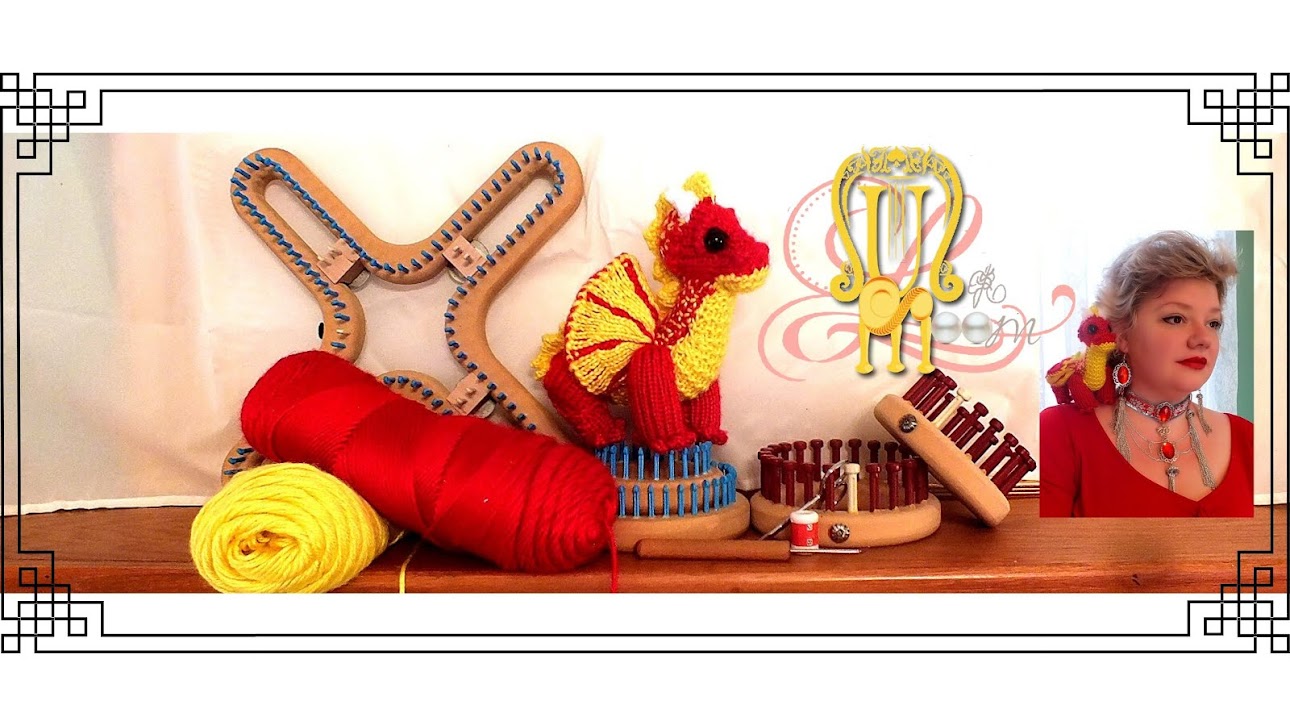Figuring Peg Count for Stitch Patterns Easy
Every wonder how to make it easier to figure out if you can work a stitch pattern into a loom you want to use or not. Well there are some quick math tricks, and ways of looking at a stitch pattern and seeing if you can adjust it while still keeping the look to maybe work for a loom you want. Here is what you do.
For quick figure with no adjustment to the stitch pattern.
#pegs/#stitches=#of times you can do the pattern.
Okay what this means is you will take the loom peg count you want, and divide it by the number of stitches it takes to complete 1 set of the pattern. This will give you how many times the pattern can be done on the loom.
What are you after with this equation?
An even number with no decimal. This tells you it works perfect.
But what if it doesn't work perfect?
If the number after the decimal is .1 or .2 you can fudge it, if it is .8 or .9 you can fudge it. This usually means you could add an extra purl or knit to make it work. But sometimes the pattern doesn't allow for that. The clover stitch below allows for an extra knit between each set, as an example for if you wanted to use it with a 36 peg loom circular.
Sometimes removing an extra purl or knit can make it work as well for more options.
For instance I was presented with a stitch pattern by someone who wanted to use a particular loom and couldn't get how to adjust it to make it work. So let me tell you how I did it. Below is the original stitch pattern, ask yourself where can you remove a stitch or 2 to change up the pattern to make is work for other peg variations. Hint: Look at the 2 knit columns with no purls.

Well look at the chart below to see that I removed a single column of knits. This changed up the pattern instead of being a 16 stitch pattern it turns into a 14 stitch pattern.
You can do this in a number of ways. You can remove a decrease section if it is a diamond and you want a smaller diamond, or a smaller heart. It could be as simple as removing a decrease or a column to make the pattern work. Always look at your stitch pattern and see.
Keep this in mind when working up rib stitches. If you want a K2 P2 that is a 4 peg pattern #pegs/#stitches= #times the pattern works on the loom. You want an even number.
What if you don't have a graph to look at?
Ah that can be a trick, make a graph or use mental imaging or look at the picture of the stitch to get the idea of if you can alter it or not. Let me get you an example. (note: reading a photo will be a tips and tricks very soon, how to read a photo to be able to make what you see.)I did a lace diamond stitch once from Renee's stitch dictionary book ( I recommend both stitch dictionaries as inspiration go to spots. Get them, well worth the money) If you have it look the image up. The diamond pattern uses 11 pegs, I wanted less, well it had 2 decreases and a top point. My thought was you could remove the decrease on the side and make it only 1 decrease and the top and bottom points. You then can change the peg count to 7, granted this was one of the more challenging adjustment stitch patterns, but that makes a difference on what you can work with. Plus I decided to give a lot more space between the laced diamond. Knowing how to adjust stitch patterns for what you want gives you designer freedom. Simple math equations and understanding what you are looking at helps a ton.




No comments:
Post a Comment